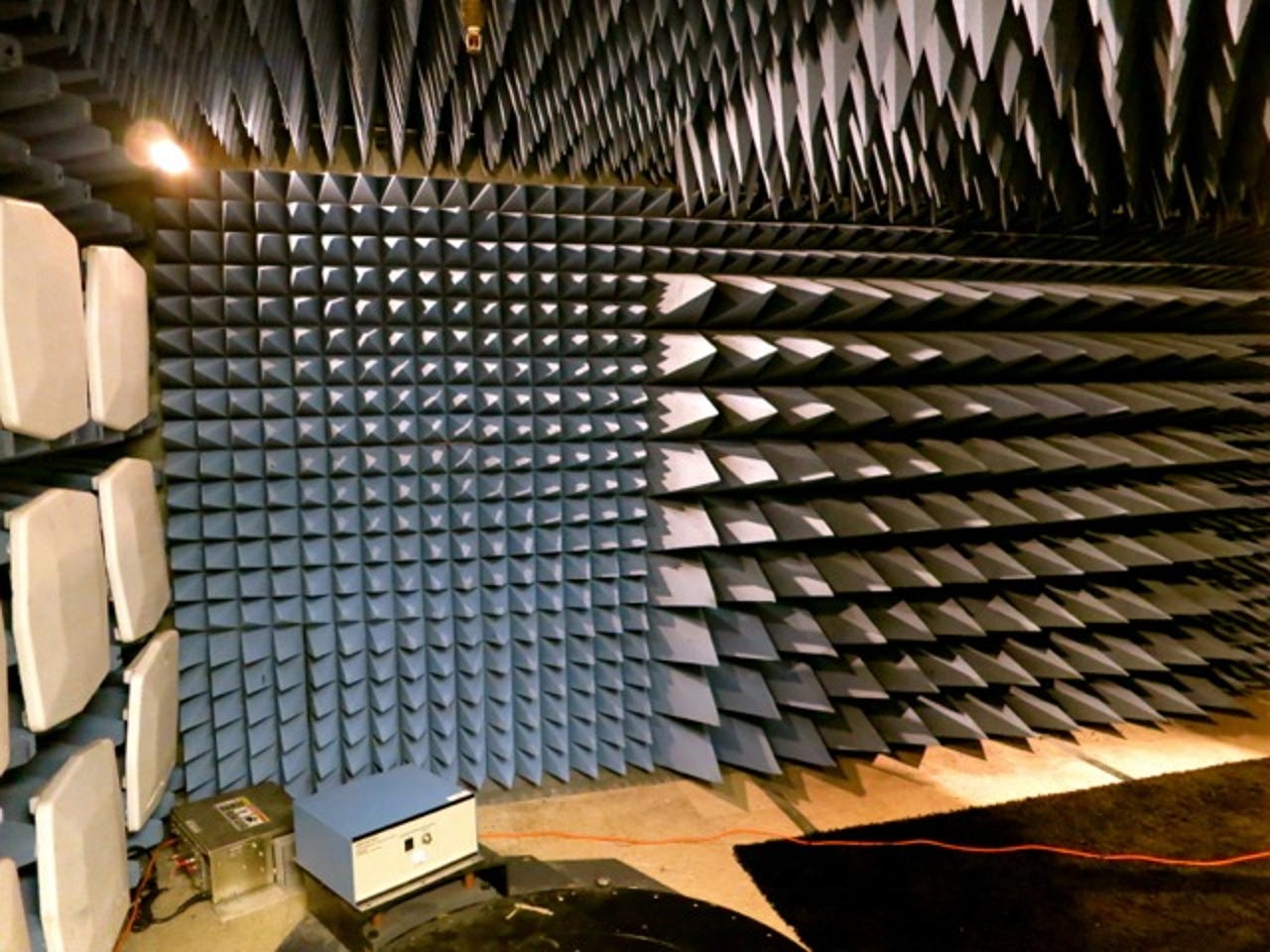Inside Logitech's video labs for optical design, 3D prototyping


NEWARK, CALIF. -- While famous for personal webcams and other computer peripherals, Logitech has also been busy focusing on producing new cameras from the ground up for home offices and small businesses.
The computer gadgets company hosted a small group of reporters and analysts on Thursday during a tour of its new Silicon Valley video laboratories.
In explaining the motivations behind some of the company's latest business-focused products. Logitech executives asserted that the videoconferencing market is going through a dramatic change.
Citing recent Forrester Research, Logitech said that a third of U.S. enterprises are expanding or upgrading deployments while another 18 percent are at least planning new implementations of the technology.
Thus, this is somewhere that Logitech wants to be and eventually dominate. Here's a peek inside Logitech's video labs in the Bay Area as the company works to achieve those goals.
AUDIO ROOM
Logitech's audio room is situated on the first floor of the building for a specific reason. Also requiring concrete flooring, this eliminates the possibility of vibrations, which would throw off sound testing, if the lab was on the second floor or higher.
It's here that Logitech's audio engineering team sets up microphones and runs tests based on quality standards that company reps said that Logitech has "developed through years of experience."
Being inside the room was almost an eerie experience because as soon as you cross the threshold, the ambient noise is all but gone, making voices sound very muted. Engineers also said that the room has been designed to shield itself from stray radio waves.
OPTICAL DESIGN
Those might look like funny eye charts, but really they're the starting point for designing camera systems -- specifically the lenses and optical design. Logitech prides itself for building its own optical structures from the ground up.
If you're wondering, those charts are for measuring sharpness, both from a peripheral view and center views when implemented in webcams.
OPTICAL DESIGN
Logitech said that the starting point for designing new camera systems is the point at which they collect light. Thus, engineers test and make changes to the lenses within these labs to ensure the best possible balance while accounting for low light and sharpness.
TEST DEVELOPMENT ENGINEERING/MANUFACTURING
Logitech executives reiterated that "most companies" outsource manufacturing processes to OEM partners in China and other parts of the world. They wanted to make the point that Logitech is different in this regard as it designs and tests all of its own parts in-house at these labs in Silicon Valley.
When everything is go to go, the designs are then produced at Logitech's own factories outside of Shanghai for precise monitoring and quality assurance.
TEST DEVELOPMENT ENGINEERING/MANUFACTURING
Logitech reps added that all of the equipment and tools available in the Shanghai factories are also on-hand and used here at the labs in Silicon Valley so that everything matches up correctly.
TEST DEVELOPMENT ENGINEERING/MANUFACTURING
One example is this color matrix station, which was in use for testing a TV webcam.
IMAGE QUALITY MEASUREMENT
Logitech said that it conducts "iterative testing" to camera design changes repeatedly to re-check the impacts of said changes. This is done to ensure consistency in quality and fast cycle times when compared to manual processes, which can take days.
IMAGE QUALITY MEASUREMENT
Logitech engineers stressed that they test image quality based on industry standards to measure metrics such as sharpness and color. They said this is done with the intention to not only meet but also exceed industry standards on their products.
IMAGE QUALITY MEASUREMENT
In this photo, a Logitech engineer is comparing the image quality produced by two cameras. The one on the left (at which the engineer is pointing) is the Logitech example, and the one on the right is from an unnamed competitor.
The primary difference seen in this photo (and clearer in person, I assure you) is that the one from Logitech is much more defined as a black and white image, while the one on the right from a competitor has a rosy tone. For reference, both products are on the market now.
IMAGE QUALITY MEASUREMENT
In response to customer feedback from different parts of the world, Logitech engineers also started testing for how skin tones appear on camera amid various lighting settings.
IMAGE QUALITY MEASUREMENT
Naturally, a machine can't catch everything, so Logitech engineers go through a lot of things subjectively with multiple settings such as various color backgrounds, lighting, and even distance from the camera.
As many of the products on display during the tour are directed at businesses, Logitech engineers and executives cited hotel rooms as a frequent consideration during testing. This is for a few reasons, namely that a lot of business travelers often conduct videoconferencing calls from hotels, which are notorious for dim lighting.
Thus, this has been a particular area of focus for engineers trying to make video quality much more natural and high-definition at the same time.
3D PROTOTYPING
When people talk about 3D these days, 3D printing of prototypes hasn't gotten as much attention as movies and such. But the potential cost savings here for businesses could be huge.
Logitech posited that 3D prototyping is the "first step" in coming up with good concepts and understanding how those concepts fit the user experience -- something that could prove difficult (if not impossible) on paper alone.
3D PROTOTYPING
Kamran Khoshkhou, a mechanical engineer and lab manager at Logitech, described that 3D prototyping allows them to build prototypes overnight rather than over two to three weeks. This means that the team can edit and revise prototypes on a quicker timeline and more often, possibly moving a project forward at a greater speed than possible before.
3D PROTOTYPING
All of the design work for the prototyping is done on a computer. For the presentation, Khoshkhou made his own replica of the Darth Vader helmet, which he jokingly repeated that it was just for fun and he's not trying to violate any copyright laws.
Nevertheless, the details on the helmet looked extremely precise when printed. On the first try, they weren't precise enough as Khoshkhou said there were a few gaps he had to fix. But the second one worked, acting as a nice privacy shade for the BCC950 ConferenceCam.
3D PROTOTYPING
Overall, Khoshkhou said that production for this prototype only took about six hours total, breaking down to three to four hours for designing it on the computer with another two hours to print.
Even better, he estimated that the plastic materials for the helmet prototype only cost about $25 to $30. The 3D printer, however, costs about $60,000.